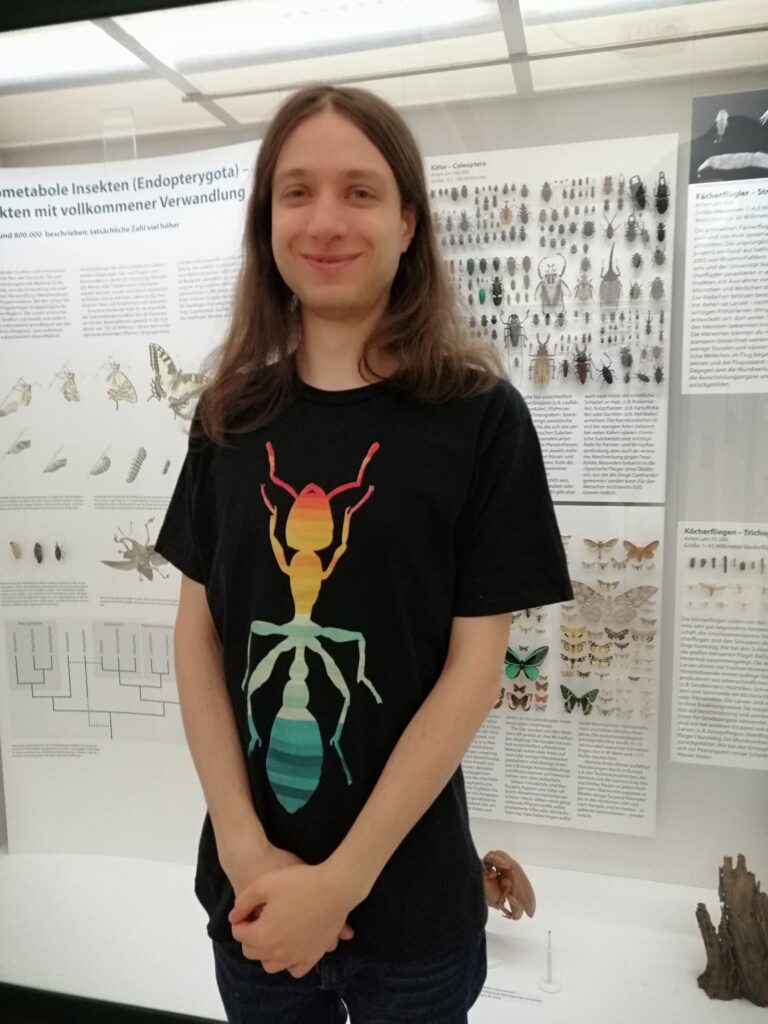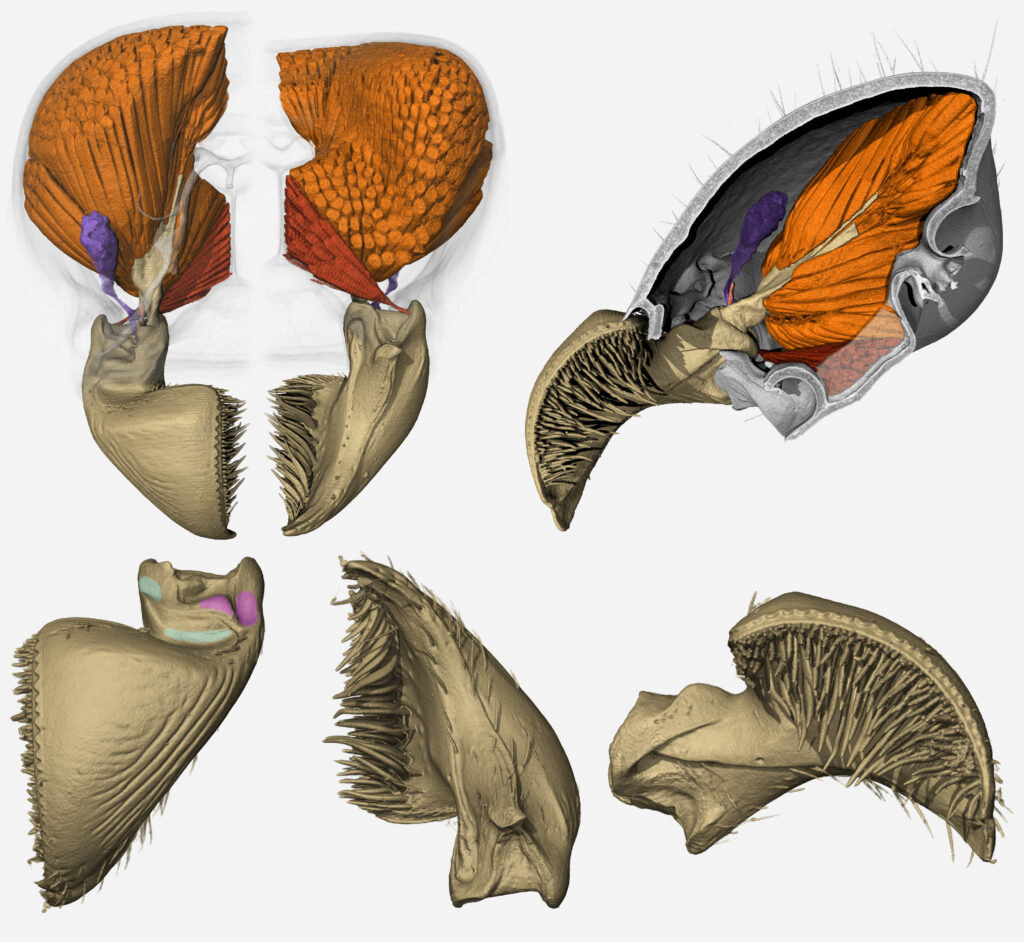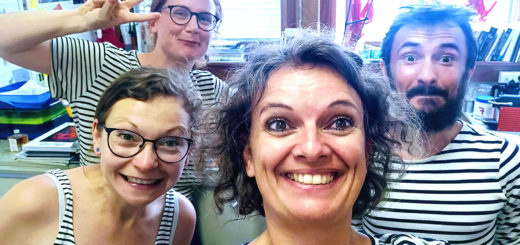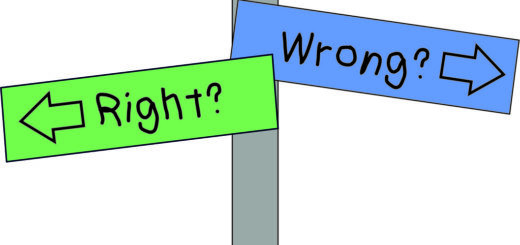The armadillo ant Tatuidris tatusia and its weird anatomy

In the recent article, “Wonderfully weird: the head anatomy of the armadillo ant, Tatuidris tatusia (Hymenoptera: Formicidae: Agroecomyrmecinae), with evolutionary implications”, Richter et al.* investigate the ant T. tatusia BROWN & KEMPF, 1968, also known as the armadillo ant. This ant species is found in Central and South America and is one of only two known species in the subfamily Agroecomyrmecinae. The biology and anatomy of these ants are not well understood because they are rarely seen alive and are mostly collected from leaf litter. The authors of the study used high-resolution micro CT scans to examine the anatomy of T. tatusia. They found that the ant has a unique head shape, which they believe is a result of adaptations for mandibular power, physical protection, and balance. They also used a 3D-printed model to study the range of motion of the ant’s mandibles. Here, first author Adrian Richter answers a few questions and highlights the main points.
* = Adrian Richter, Brendon E. Boudinot, Francisco Hita Garcia, Johan Billen, Evan P. Economo & Rolf G. Beutel
An Interview compiled by Phil Hönle, Patrick Krapf, and Lina Pedraza

MNB: Could you tell us a bit about yourself?
AR: I am from Germany and from an early age I have been interested in ants, other insects, and the nature around me. I guess the interest came from the many ants that used to enter our house from a nearby forest. Because I wanted to work with nature I did a Bachelor in Biology at the University of Jena. Here, I ended up in the group of Rolf Beutel and Hans Pohl, who are experts in insect morphology and phylogeny. Morphology as a research subject fascinated me because it is a way to understand the super cool body shapes that made me fall in love with ants and other arthropods in the first place. So, after my Bachelor I continued to work with them as a master and later a Ph.D. student, finally working directly on my beloved ants. My main focus throughout this time was the study of ant head morphology, but I’ve also dipped my toes into other body parts and other groups of insects. Ultimately, I am interested in how the immense morphological diversity of insects evolved. The next step on the way to achieve this will be a JSPS (Japanese Society for the Promotion of Science)funded postdoc with Evan Economo at OIST (Okinawa Institute of Science and Technology Graduate University) this year. In that project, I will investigate the evolution of the digestive system in ants, using some new comparative methods and types of analyses.
MNB: Could you briefly outline the research you published in Myrmecol. News in layman’s terms?
AR: We took a closer look at the head of Tatuidris tatusia, the “armadillo ant” using micro computed tomography (µCT) scans. This ant is interesting in several aspects. It occurs rather broadly in Central and southern America. Tatuidris is frequently found in litter samples, but discoveries of whole colonies or even any living workers are comparatively rare, so we don’t understand much about its ecology. In particular, we don’t even know what they eat, although there is good evidence that they are predators (Jacquemin et al. 2014). The ant also just looks pretty weird overall, with a massive, broad head, deep antennal scrobes, cup shaped mandibles with thick brushes of spine-like hairs, and a well-developed postpetiole. Partly because of this weirdness, the systematic position of Tatuidris has also been under much debate, but recent phylogenomic studies place it in the small subfamily Agroecomyrmecinae among the “poneroid” ants. By studying the head anatomy with µCT data, we found even more bizarre characters of this ant than were known before. We especially focused on the mandible articulations because they are distinct from other ants for which we have this kind of information. We did some experiments with 3D-prints to present a hypothesis of how these unusual mandibles actually move (See video 1). Hopefully, the model print and our other results can help to guide future studies on the behavior and ecology of these ants when they are collected alive again. Additionally, we used this study as an opportunity to think about the morphological evolution of the poneroid ants. We are only recently and slowly arriving at well-supported, more or less stable phylogenetic hypotheses for this group of ants (see, e.g., Romiguier at al. 2022), so we thought it could be useful to take stock of where we stand with our morphological understanding. We relied mostly on published datasets and the work of Roberto Keller (Keller 2011), but in the future, we would like to expand this in a lot more detail with µCT scans of all the different groups.

MNB: What is the take-home message of your work?
AR: Tatuidris are weird ants! Especially their mandibles. It is always cool to see how diverse ant mandibles are in morphology and movement. We found that a lot of their inner anatomy reflects the external weirdness. For example, the tentorium has an odd shape, with an almost 90° bend at the back of the head, which was not found in any other ants (or hymenopterans, for that matter) and is probably related to the unusual downward orientation of the antennal socket (See video 2). We saw that in the light of the new phylogenies, particularly the recent resolution of the poneroids, it was possible to update the character polarity hypotheses of Bolton—i.e., to update our view of morphological evolutionary historiy— and to take a look at patterns that were not previously considered. For example, the Agroecomyrmecinae and Proceratiinae have a level of mesosomal fusion that may be synapomorphic, suggesting a possible trend for mesosomal rigidity in this newly recovered clade. At the moment, there are still very few ants for which we have detailed 3D data, especially for their internal body parts. Amassing a body of knowledge for internal anatomy will certainly improve our understanding of phenotypic evolution in the future, helping us collectively to understand why ants look the way they do.

MNB: What was your motivation for this study?
AR: The goal of my Ph.D. thesis was to study the head anatomy of as many different ant species in as much detail as possible in order to reconstruct the evolution of head structures across the ant phylogeny. In this larger context, Tatuidris was particularly enjoyable to work on because of their general strangeness that I mentioned above, but also as the representative of a species-poor subfamily within the poneroid ants. Because morphology (as most science, I guess) usually ends up taking more time than one thinks, I have not quite finished my project on the ant head yet, but I hope this study of Tatuidris will be interesting in the meantime as a truly extreme example of modification. I will come back to it when I put it into the larger context of all ants one day. Ultimately, we want to understand how and why certain groups of ants evolved the way they did and I think morphology is one element of that evolutionary story that works together with ecology, behavior, development, and so on. Thus, I hope our study will be useful.
MNB: What was the biggest obstacle you had to overcome in this project?
AR: It was not so easy to assess and evaluate the current morphological knowledge of the poneroid ants. We are talking about six subfamilies with over 1500 species, after all. We relied a lot on the SEM image atlas of Roberto Keller, which is also available on Antweb (you can look for RAK-SEM in the specimen notes in the advanced search, for example) and the personal experience of Brendon Boudinot looking at a ton of different ants. We think that this gave us a good first idea, but we are probably just scratching the surface of many features still!
MNB: Do you have any tips for others who are interested in doing related research?
AR: I think getting into hardcore morphology can appear daunting because it is somewhat arcane, with many specialized terms for minute anatomical structures. But I think morphology can be at the center of diverse fields of study; you can look at the function of certain body parts, you can compare them to learn something about evolution, you can test how they change and are specified throughout development, you can look at the physiology of muscles and glands. There is a vast number of techniques, methods and types of analyses available today, so if you have any questions that could benefit from looking at animal body forms, I am sure you will be able to find an approach that fits you. I personally find morphology very rewarding because it allows me to see the animals I love with new eyes.
MNB: Where do you see the future for this particular field of ant research?
AR: In one word, this would be “phenomics”. We can generate huge morphological datasets now using techniques like µCT scanning, but we still need to become better at extracting information from these data and analyzing them effectively. Probably the current advances in machine automation will help with that. I also want to emphasize that it is important to not only see morphology as a tool for taxonomy or systematics. The body and its structures are one basis for how organisms interact with their environment and are thus an important target for natural selection. Because of this, I believe that understanding it will remain an important task in evolutionary biology.
References
Jacquemin, J., Delsinne, T., Maraun, M. & Leponce, M. 2014: Trophic ecology of the armadillo ant, Tatuidris tatusia, assessed by stable isotopes and behavioral observations. – Journal of Insect Science 14: art. 108.
Keller, R.A. 2011: A phylogenetic analysis of ant morphology (Hymenoptera: Formicidae) with special reference to the poneromorph subfamilies. – Bulletin of the American Museum of Natural History 355: 1-90.
Romiguier, J., Borowiec, M.L., Weyna, A., Helleu, Q., Loire, E., La Mendola, C., Rabeling, C., Fisher, B.L., Ward, P.S. & Keller, L. 2022: Ant phylogenomics reveals a natural selection hotspot preceding the origin of complex eusociality. – Current Biology 32: 2942-2947.





Weird article… Strange… Needs more to understand… Yep, needs to.read it a few times…